ShadowWolf Country

The Wolf
Chronology

20,000 B.C. - Cave drawings of wolves are made
in southern Europe.
5,000 B.C. - Early agricultural settlements in
southwest Asia come into conflict with wolves.
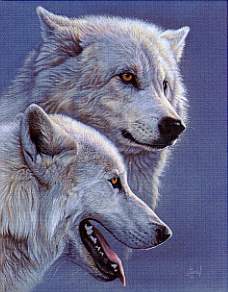
2,300 B.C. - First reference to a wolf in
Western literature occurs in the Epic of Gilgamesh.
800 B.C. - Numerous references to wolves are
made in Homer's epic poem The Iliad.
500 B.C. - Aristotle describes wolves in his
writings.
A.D. 30 - Jesus Christ uses wolf parables
to illustrate moral principles.
70 - Pliny the Elder provides a
detailed pseudoscientific account fo wolves in his book, Natural
History.
70 - Plutarch describes the legend of
Romulus and Remus, founders of Rome who were raised by
wolves, in his Putative Lives of the Noble Greeks
and Romans.
600 - During the European Middle Ages,
legends of werewolves and beliefs that wolves are
assoicated with devils abound.
750 - Beowolf, the oldest of the major
narrative poems in English, is composed; the protagonist,
named for wolf, slays a monster named Grendel.
1600 - William Shakespeare employs
dozens of wolf references in his plays.
1630 - First wolf bounty law passed by
the Massachusetts Bay Colony.
1632 - First wolf bounty law passed by
the Virginia Bay Colony.
1697 - New Jersey offers a wolf bounty.
1750 - Wolves become extinct in the
Scottish Highlands at the hands of Lochiel, a clan
chieftain, because they "preyed on the red deer of
the Grampians." Wolves are similiarly persecuted in
western Europe, but do not become extinct in France,
Italy, or Spain as they do in other countries.
1758 - Linnaeus recognizes the wolf as a
circumpolar species and gives the species the Latin name Canis lupus
linnaeus.
1790 - Russian and German naturalists
report wolves in Alaska.
1793 - Wolf bounty is offered in
Ontario.
1805 - Explorers Meriwether Lewis and
William Clark encounter wolves in the Far West.
1808 - Zebulon Pike reports wolves in
what is today Colorado.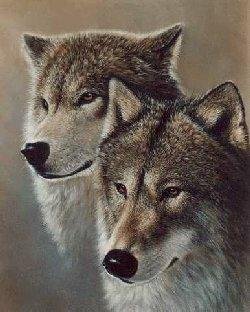
1819 - The government expedition of
Major Stephen Long encounters wolves in large numbers in
Colorado.
1823 - As with earlier government
expeditions, trapper/explorer James Ohio Pattie documents
wolves living in close association with extensive prey
populations.
1832 - Artist George Catlin paints Buffalo
Hunt Under the Wolfskin Mask, depicting two Pawnee warriors
hunting buffalo disguised as wolves, and White
Wolves Attacking a Buffalo Bull, which portrays two dozen wolves
killing an old bull buffalo. These paintings are later
exhibited in New York, London, and Paris.
1835 - America's first internationally
known writer, Washington Irving, describes wolves in what
is today Oklahoma in his travel narrative A Tour on
the Prairies;
he is the first professional writer to do so.
1840s - Tens of thousands of settlers
head west on the Oregon Trail and the Santa Fe Trail.
Increasing settlements come into conflict with wolves and
their prey species as the entire Great Plains ecosystem
begins to be destroyed.
1860s - Western railroad expansion brings
buffalo market hunters to the Far West, decimating the
great buffalo herds.
1870s - First cattle drives introduce
livestock into previously remote mountain habitat for
wolves; sheep herds will come later, leading to even more
destruction of wolves and other predators.
1872 - Yellowstone National Park is
established in northwestern Wyoming.
1880s - Theodore Roosevelt reports wolves are becoming
scarce in the Dakotas.
1884 - U.S. Biological Survey is formed
( a precursor to the U.S. Fish and Wildlife Service).
1894 - Nature writer Ernest Thompson
Seton kills the Currumpaw wolf of New Mexico and his
mate, Blanca. Seton will eventually write a book, Lobo, King
of the Currumpaw, about this experience.
1897 - Frederic Remington paints Moonlight
Wolf,
depicting a solitary Great Plains wolf (Canis lupus
nubilus), a subspecies that would become extinct in a few
years.
1899 - Wolf bounty is offered in
Alberta.
1909 - Aldo Leopold kills a mother wolf
and pups in the Apache National Forest of Arizona. This
incident will later inspire his seminal essay "Thinking
Like a Mountain" written in 1944 and published
posthumously in 1949.
1909 - Wolf bounty is offered in British
Columbia.
1914 - Congress designates U.S.
Biological Survey as chief predator control agency.
1915 - First professional trappers and
hunters hired by U.S. Biological Survey; their heyday
will run through 1942 as wolfers operate in Colorado,
Wyoming, Montana, the Dakotas, Arizona, and New Mexico.
1915 - Wolf bounty offered in Alaska.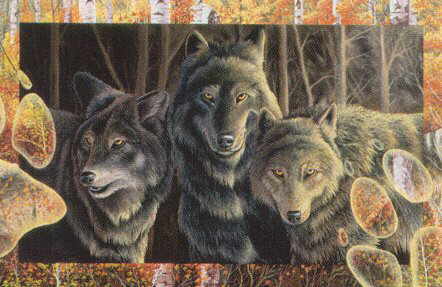
1916 - National Park Service Act is
signed into law, mandating protection of wildlife and
maintenance of recreational opportunities.
1916 - The American Far West is divided
into control districts by U.S. Biological Survey, thus
paving the way for the systematic extermination of all
predators through use of poisoned baits (strychnine;
Compound 1080 after 1944) and steel leg-hold traps;
eventually airplanes and helicopters will be used.
1925 - Last wolf in South Dakota
("Old Three Toes") is killed.
1926 - Since 1914 about 120 wolves have
been killed in Yellowstone National Park; after 1926
there are no viable reports of wolves or wolf activity in
northwestern Wyoming for a number of decades.
1927 - Last wolf in eastern Montana is
killed.
1929 - German novelist Herman Hesse
publishes Steppenwolf, a novel that links the impulsive,
atavistic nature of man with the same quality of the wolf
of the eastern European/western Asian steppes.
1929 - Ernest Thompson Seton publishes Lives of
the Great Animals, a seminal work of natual history.
1933 - Wolf bounty law is repealed in
Montana.
1934 - Wildlife biologist Adolph Murie
begins his study of the coyote in Yellowstone National
Park and confirms the wolf in now extirpated. Murie also
establishes that the coyote poses no threat to the major
game species, most notably elk, that migrate out of the
park into national forests, where they can be hunted.
1939 - Adolph Murie begins a two-year
study of the relationship between the subartic wolf
(Canis lupus pambasileus) and the Dall sheep (Ovis ovis
dalli); Murie concludes that the wolf has a
"salutary effect" on the prey species, a
finding that stirs much controversy in the National Park
Service.
1943 - Last wolf in Colorado is killed
in Upper Conejos River near Platoro Reservoir.
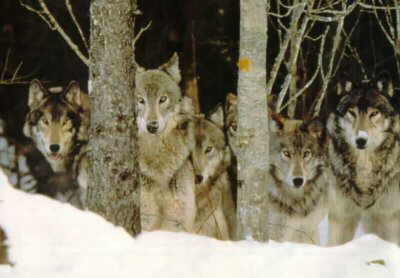
1944 - Stanley Young's The Wolves
of North America (a mixture of fact and folklore) is
published. Adolph Murie's The Wolves of Mount
McKinley is
published; it is the first scientific treatise on the
species. Murie is the first professional photographer to
extensively document the wolf in the wild.
1948 - Special Act of Congress permits
wolf trapping in Mount McKinley National Park over the
objections of Adolph Murie and other biologists. Murie
later is forced to play a role in this eradication
measure, which results in the artificially elevated
numbers of caribou seen in the park in the 1960s and
1970s (before the caribou population collapse).
1950s - Aerial hunting of wolves in
Alaska and Canada begins in ernest.
1960s - Persistent unconfirmed wolf
sightings in Yellowstone National Park will continue
until the present time. Radio-collared Alaskan wolves
have covered up to 400 miles in one year, so the
possibility that the Yellowstone wolves came from Canada
cannot be ruled out (nor can the covert release of wolves
by unknown parties).
1962 - L. David Mech completes his
doctoral dissertation on the wolves of Isle Royale
National Park. (This wolf population will later be
decimated by canine distemper in the late 1980s.)
1963 - Canadian writer Farley Mowat
publishes Never Cry Wolf; a highly successful film will
later (1983) dramatize Mowat's adventures in the Canadian
Artic and for the first time portray wolves positively to
the public in cinema. Leopold report recommends predator
restoration.
1964 - Wilderness Act is signed into
law; it protects former wolf habitat for furture
restoration projects (though not by design).
1970 - Mexican wolf killed Peloncillo
Mountains of New Mexico.
1970 - L. David Mech publishes The Wolf;
Ecology and Behavior of an Endangered Species.
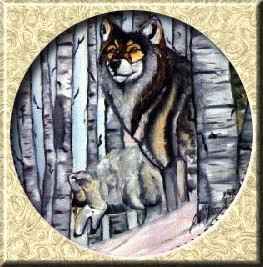
1970s - U.S. Fish and Wildlife Service
captures Mexican wolves in Mexico for captive breeding.
1970s - U.S. Fish and Wildlife Service
captures red wolves in Texas and Louisiana for captive
breeding.
1970s - U.S. Fish and Wildlife Service
extensively studies the Minnesota wolf populations.
1971 - Quebec ends wolf bounty.
1972 - Ontario ends wolf bounty.
1973 - Edangered Species Act is passed
into law. The 1982 amendments will put enforcement
strength into the act and provide further clarification
on restoration issues.
1974 - Yellowstone wolf search involves 1,800 hours of
airplane overflights and reveals only one "wolf-like
canid."
1976 - Encouraged by National Park
Service officials, Colorado State University graduate
student Herb Conley writes a thesis on the restoration of
wolves to Rocky Mountain National Park, where the
burgeoning elk populations are destroying habitat, as in
Yellowstone.
1976 - Two red wolves are released on
Bulls Island off the South Carolina coast.
1978 - Barry Lopez publishes Of Wolves
and Men.
1979 - Mexican Wolf Recovery Team is
appointed; recovery plans for the red wolf and the
northern Rocky Mountain gray wolf are also
institutionalized at this time. Durward Allen publishes
The Wolves of Minong: Their Vital Role in a Wild
Community.
1980 - Alaska National Interest Lands
Conservation Act (ANILCA) is signed into law. It doubles
the National Park system and triples national wilderness
acreage in Alaska.
1980s - Discussions of northern Rocky
Mountain grey wolf recovery focus on Yellowstone, central Idaho, and
northwestern Montana. 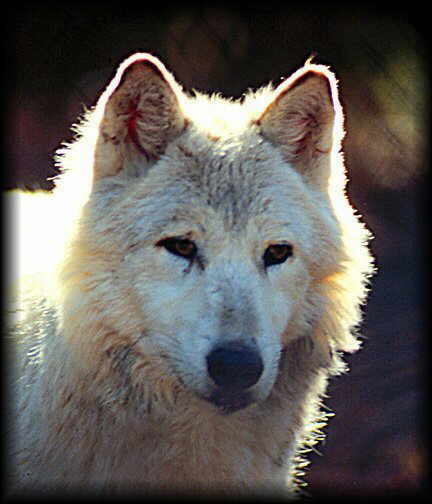
1982 - Montana biologist Diane Boyd
completes her thesis on a migrant wolf on the North Fork
of the Flathead River near Glacier National Park; during
the late 1980s several wolf packs will establish
themselves in this region of the United States.
1982 - Arizona wildlife manager David E.
Brown publishes The Wolf in the Southwest, which
documents the eradication by the federal government of
the southern Rocky Mountain gray wolf and Mexican wolf in
Arizona and New Mexico.
1983 - Film version of Never Cry
Wolf is
released.
1985 - Retired professor Alston Chase
alleges in his controversial book Playing God
with Yellowstone that the National Park Service
secretly tried to restore wolves to Yellowstone.
1986 - Eight red wolves arrive at
Alligator River National Wildlife Refuge in coastal North
Carolina; after acclimatization they will later be
released, with mixed results in terms of adaptation and
survivability.
1986 - L. David Mech begins study of
arctic wolves in Canadian high Arctic.
1988 - Wolves killed in northwestern
Montana by federal agents after livestock depredations.
1988 - U.S. Fish and Wildlife Service
report concludes White Sands Missile Range in southern
New Mexico is a suitable location for Mexican wolf
restoration. Army raises objections but drops them in
1991, while livestock interests continue to oppose this.
Other sites discussed include Big Bend National Park in
Texas, the Gila Wilderness Area in New Mexico, and
several wilderness locations in Arizona.
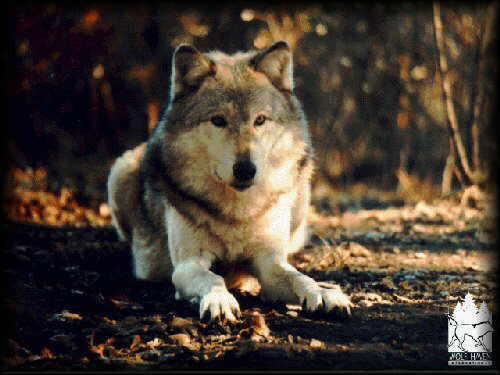 1990s - Wolves are confirmed in
Washington, Idaho, and North Dakota. 1990s - Wolves are confirmed in
Washington, Idaho, and North Dakota.
1991 - Two red wolves arrive at Cades Cove,
Tennessee, to be prepared for release in Great Smoky
Mountains National Park. Red wolves have also been
released by this time in Florida, Mississippis, South
Carolina, and Alabama in various study projects. (A total
of thirty-five red wolves are alive in captivity by 1991,
including those in North Carolina.)
1992 - U.S. Fish and Wildlife Service
Director John Turner endorses a blue-ribbon report
recommending restoration of the gray
wolf to Yellowstone National Park; the environmental
assessment process further studies the potential effects
of reintroduction on other species, including the
threatened grizzly bear (to be completed in May 1993).
1992 - The film Dances with
Wolves
portrays wolves in a positive light and wins several
Academy Awards.
1992 - Rick Bass publishes The
Ninemile Wolves,
which examines the impact of a newly formed wolf pack
near his home in northwestern Montana.
1992 - Polls indicate two of out three
Montanans favor natural recovery of wolves in the state.
Taken from Out Among the
Wolves,Contemporary Writings on the Wolf, Edited by
John A. Murray, Copyright 1993

1999
 Channel 4000 - Minnesota Wolf
Population On The Rise Channel 4000 - Minnesota Wolf
Population On The Rise
 Yellowstone Wolf Report #26 Yellowstone Wolf Report #26
 Wolf Hysteria Rules The Day In New
Hampshire -- Conservationists Call Wolf Prohibition
Absurd Wolf Hysteria Rules The Day In New
Hampshire -- Conservationists Call Wolf Prohibition
Absurd
 Group Puts Money Where Its Mouth Is:
Defenders Makes Mexican Wolf Compensation Offer Group Puts Money Where Its Mouth Is:
Defenders Makes Mexican Wolf Compensation Offer
 The Newest Online Answer to Saving
Something Wild: Shop Online and Save Yellowstone's Wolves The Newest Online Answer to Saving
Something Wild: Shop Online and Save Yellowstone's Wolves
 Chocolate Company Joins Forces with
Defenders for a \Sweet\ Deal to Save Yellowstone Wolves Chocolate Company Joins Forces with
Defenders for a \Sweet\ Deal to Save Yellowstone Wolves
 Farm Bureau Vs. Wolves -- Defenders
of Wildlife Farm Bureau Vs. Wolves -- Defenders
of Wildlife
 Ralph Maughan's wolf report Ralph Maughan's wolf report

  


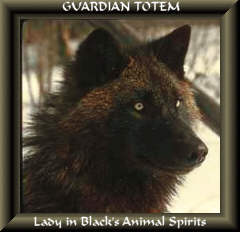

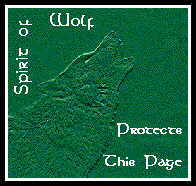

Site
Design by ShadowWolf Copyright © 1999-2000



This page last
updated March 19, 2000
|